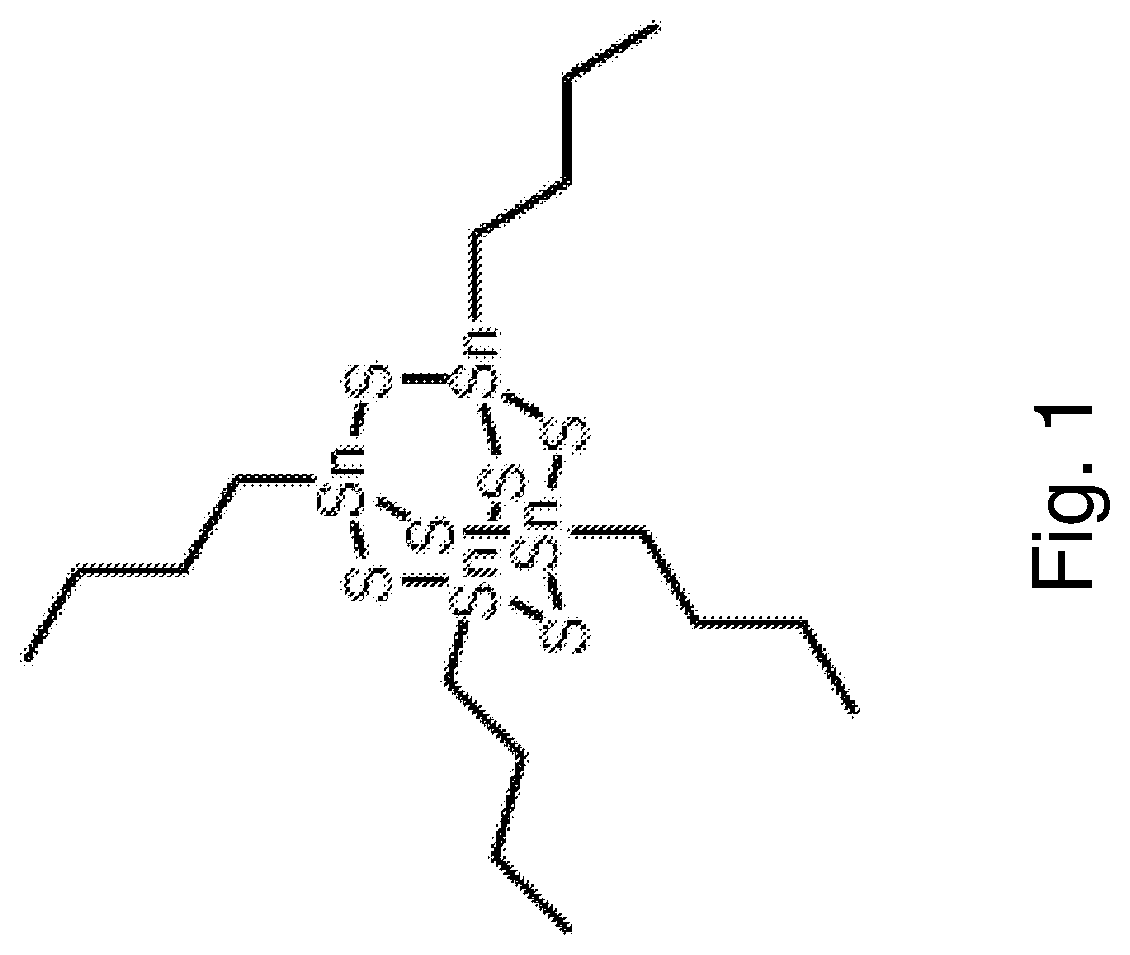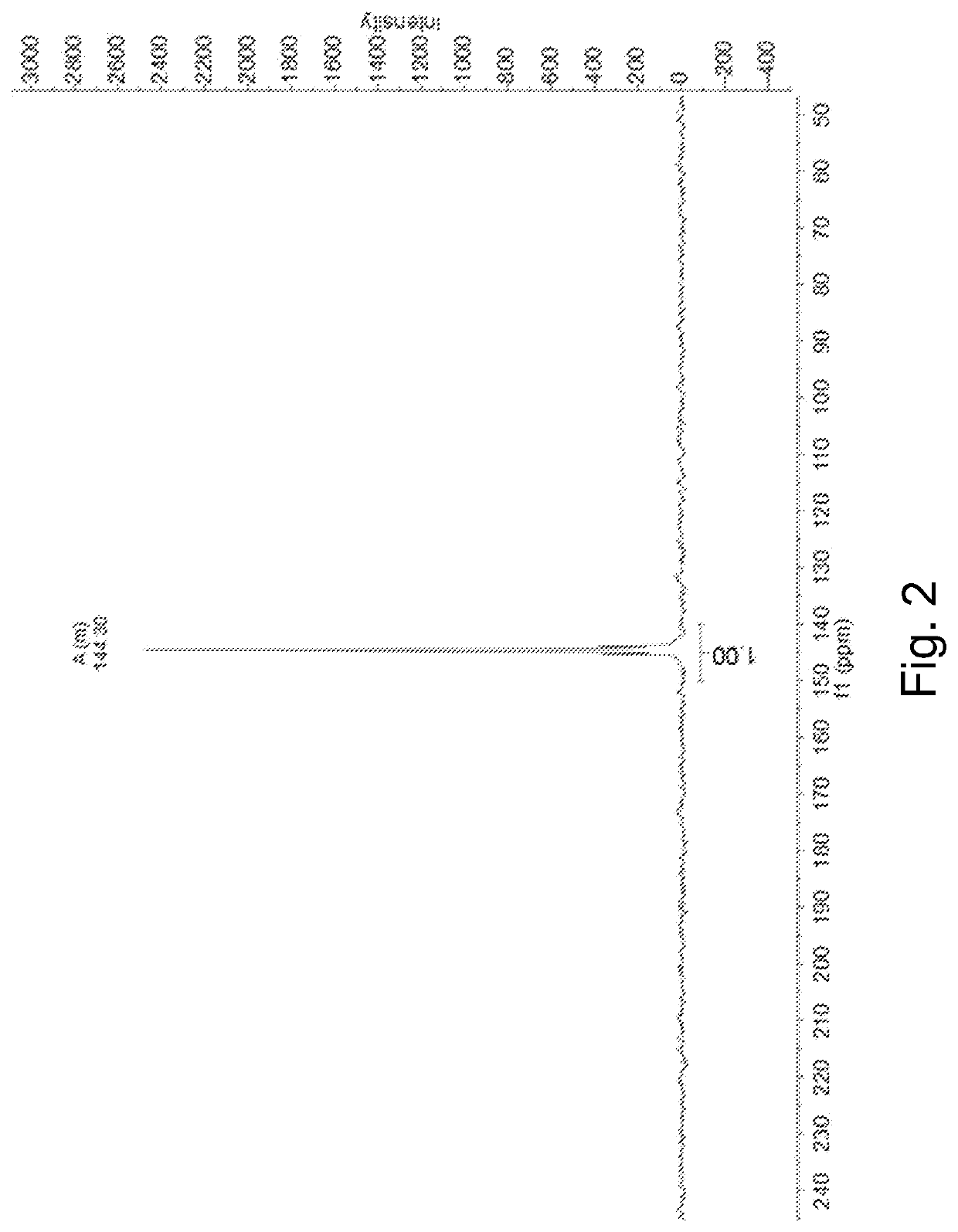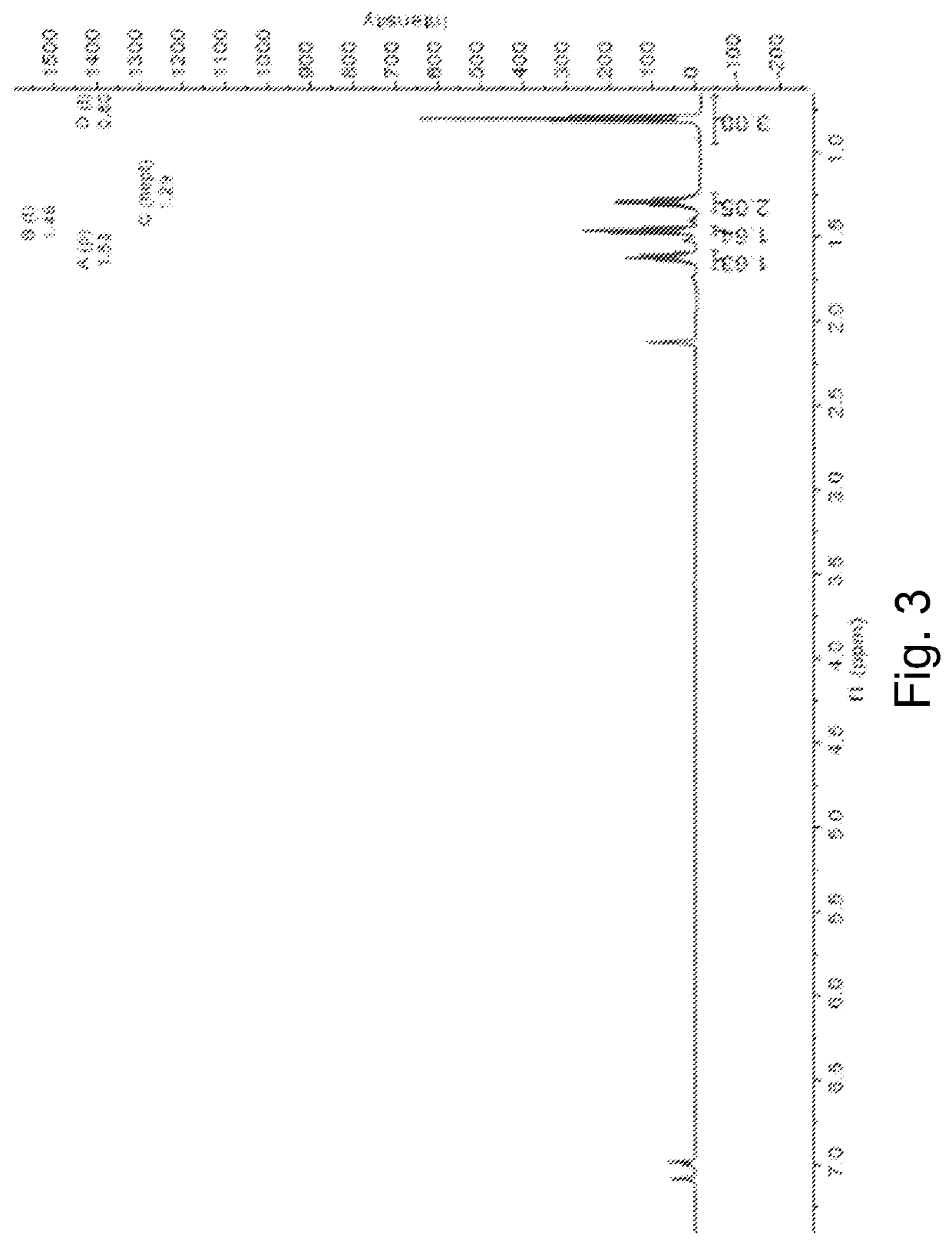Organometallic metal chalcogenide clusters and application to lithography
a technology of organic chalcogenide and clusters, applied in the field of organic chalcogenide clusters and application to lithography, can solve the problems of affecting the dissolution rate of selected solvents, and achieve the effect of less soluble in organic solvents
- Summary
- Abstract
- Description
- Claims
- Application Information
AI Technical Summary
Benefits of technology
Problems solved by technology
Method used
Image
Examples
example 4
ed Wafers
[0082]This example describes the preparation of film-coated wafers and demonstrates that thin and smooth films can be deposited for both the n-butyltin and the n-butenyltin cluster compositions.
[0083]Silicon wafers (10.2-cm diameter) with a native-oxide surface served as substrates for thin-film deposition. Unless otherwise indicated, films were deposited on untreated wafers by spin coating toluene-based precursor solutions, prepared as described in Example 3, onto untreated wafers at 1500 rpm for 30 seconds. In some cases, wafers were pre-treated by wetting with casting solvent if useful to obtain a good coating. Specifically, a precursor solution of (C4H9Sn)4S6 (R1) in toluene having a tin concentration of 75 mM was spin coated onto a wafer at 1500 rpm for 30 seconds to produce a film sample (F1) with a film of thickness 176 nm. A second precursor solution of (C4H7Sn)4S6 (R2) in toluene having a tin concentration of 75 mM was spin coated onto a wafer at 1500 rpm for 30 se...
example 5
Tone Imaging with UV Exposure
[0086]This example demonstrates that UV radiation can induce negative tone dissolution contrast in films prepared from n-butyltin and n-butenyltin cluster compositions.
[0087]Film samples F1 and F2, prepared as described in Example 4, were placed in a box lined with aluminum foil within an argon-filled glovebox. Sections of film samples F1 and F2 were exposed to laboratory UV light to provide radiation at a wavelength of around 354 nm for some minutes for all of the samples uniformly to provide an appropriate dose, resulting in film samples F1 and F2 each having regions of exposed and unexposed film. The film samples were then developed by submerged for 30 seconds in a mixture of anisole and THF. For each anisole:THF mixture, the film thickness was measured for the exposed and unexposed sections of each film sample using a J. A. Woollam M-2000 spectroscopic ellipsometer. The normalized film thickness was calculated as the thickness of the developed sectio...
example 6
y Contrast Via EUV Exposure
[0091]This example demonstrates solubility contrast in films from Example 3 after exposure to EUV radiation.
[0092]Films were deposited as described in Example 4 onto 10.2-cm diameter silicon wafers with a native oxide surface. Precursor solutions of (C4H9Sn)4S6 and (C4H7Sn)4S6 were prepared with a concentration suitable to deposit films of R1 and R2, respectively, each film with a thickness of approximately 20 nm. For the contrast curves shown in FIG. 16 and FIG. 17, film thickness ranged between 20.6 nm and 22.9 nm.
[0093]Films were exposed on the EUV Direct Contrast Tool at Lawrence Berkeley National Laboratory. Prior to exposure, the films were baked at 100° C. for 2 minutes. A linear array of 50 circular exposure regions ˜500 μm in diameter were projected onto the wafer with increasing EUV exposure doses. After exposure, the films were developed with 2-heptanone, THF, a 20% (v / v) mixture of anisole in THF, or a 40% (v / v) mixture of anisole in THF. Films...
PUM
| Property | Measurement | Unit |
|---|---|---|
| thickness | aaaaa | aaaaa |
| thickness | aaaaa | aaaaa |
| wavelength | aaaaa | aaaaa |
Abstract
Description
Claims
Application Information
 Login to View More
Login to View More - R&D
- Intellectual Property
- Life Sciences
- Materials
- Tech Scout
- Unparalleled Data Quality
- Higher Quality Content
- 60% Fewer Hallucinations
Browse by: Latest US Patents, China's latest patents, Technical Efficacy Thesaurus, Application Domain, Technology Topic, Popular Technical Reports.
© 2025 PatSnap. All rights reserved.Legal|Privacy policy|Modern Slavery Act Transparency Statement|Sitemap|About US| Contact US: help@patsnap.com



